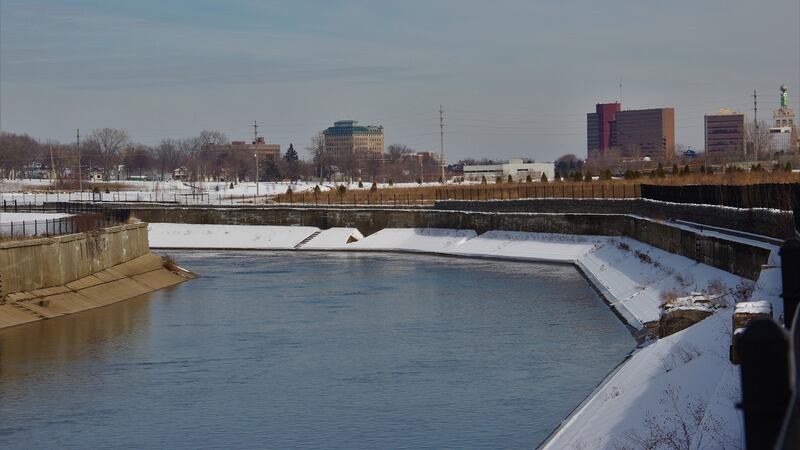Flint was once the epitome of the American dream. Fifty years ago, its neighbourhoods were replete with large, well-maintained single-family homes, and more than a third of its 200,000 residents had jobs at the local General Motors automobile plant. Surrounded by rolling farmland and woods, by 1980 it boasted the highest median income for young people of any city in the US.
As you drive through its downtown core and neighbourhoods today, Flint is a very different city. Its streets are unlit and dotted with bone-shuddering potholes. Many of its mid-20th century homes and schools have been left vacant. The urban flight of white residents that followed the Civil Rights Movement’s push for desegregation in the 1960s saw Flint’s well-off residents decamp to the suburbs, taking their tax dollars with them.
Flint was especially affected by the shift in manufacturing from America’s midwestern cities and towns to countries in Asia, where labour costs are far less. As a result, the GM plant that employed 80,000 people at its height in 1960 today provides just over 1,000 jobs to the community. On top of that, decades of chronic mishandling of city finances and corruption have contributed to the Vehicle City’s demise. These days, when it snows, a lack of funding means city ploughs are deployed only on main streets, leaving residential areas a slippery mess.
While the water crisis that emerged in 2014 drew global attention to Flint, it continues to face a multitude of problems today. Chief among them is a worsening opioid epidemic that claimed 152 lives from overdoses in Genesee County, in which Flint is located, in 2017 – a rate that’s almost twice the national average.
Opioid addiction
At the East Flint Church of the Nazarene, a group of 17 people have gathered for a meeting of the Families Against Narcotics (FAN) support group. Seated in a circle, many are parents or siblings of drug addicts who have come to share their experiences, or to garner a better understanding of opioid addiction.

One mother solemnly tells of how she lost her son to an overdose last October. Across the circle from her, an elderly couple say they’ve come looking for information on how to help their 47-year-old son, who was recently arrested for drug offences. “I think he’s using methamphetamines. What are they?” the mother asks the group. In a small side room, volunteers offer demonstrations on how to administer the naloxone nasal spray that can revive a person who has overdosed.
"It's been increasing," says Cheri Pfeiffer, the treasurer of FAN in Genesee County, of the number of people attending. "One time, we sat here alone, but if there's a big name coming to give a talk, we could have up to 100 people." Pfeiffer's eldest son, she says, struggled with heroin addiction for years but is now clean.
Volunteers and health professionals say they find it hard to keep up with the growing array of lethal opioids and their impact on the city. "The town's problems are fuelled by drugs," says Danny Martinez, director of rehabilitation services at the Salvation Army's Adult Rehabilitation Centre. "The jails are crowded."

Forty five per cent of residents in “America’s abandoned city”, as Flint is sometimes known, live in poverty today, according to the US Census Bureau. That’s the highest rate of any city in the US with a population of more than 65,000 people. Flint also has a rising homicide rate, linked to drug and gang activity, which has seen it become one of the most violent cities in the country.
Dwindled population
Because Flint’s population is now half what it was in 1960, money in the form of taxes required to fund and maintain essential services such as education, healthcare and, notably, its water-delivery system, has been hard to come by for years.
Flint's water crisis began in 2014 when emergency managers charged with temporarily running the cash-strapped city switched its water source from that used by Detroit, 112km away, to the Flint river that runs through the city, hoping to save money. But because the river water was inadequately treated, it corroded the aged lead pipes used to deliver water to people's homes.

Ariana Hawk's son, Sincere, was three years old when he appeared on the cover of Time magazine in 2016, his skin swollen by rashes and lesions from exposure to the contaminated water. To this day, Hawk says she is forced to use a steroid ointment to treat her son's skin, the side effects of which have interfered with his normal physical development. Taking baths still makes Sincere's skin terribly itchy, she says.
"We still have to use and wait in line for bottled water, we are still using filters. We can only take showers for a short time, and the kids can't do anything with the water that they'd normally do," Hawk says. City of Flint officials say the water has been safe for use since last April, though some Michigan lawmakers openly disagree.
Hawk, a local organiser for the civil rights group Color of Change, temporarily left Flint with her family in 2016 when she felt solutions to the crisis weren’t materialising. A year later she was forced to return when informed she would lose access to support measures for families affected by the emergency.
She says other issues have played a role in Flint’s woes, too.
“With this being a problem that’s affected a predominantly black community, there’s a racial element,” she says. “Had this happened to a white community, we think that five years later we would not still need help. With [for example] Hurricane Katrina, people received a lot of help. We haven’t felt that.”

















